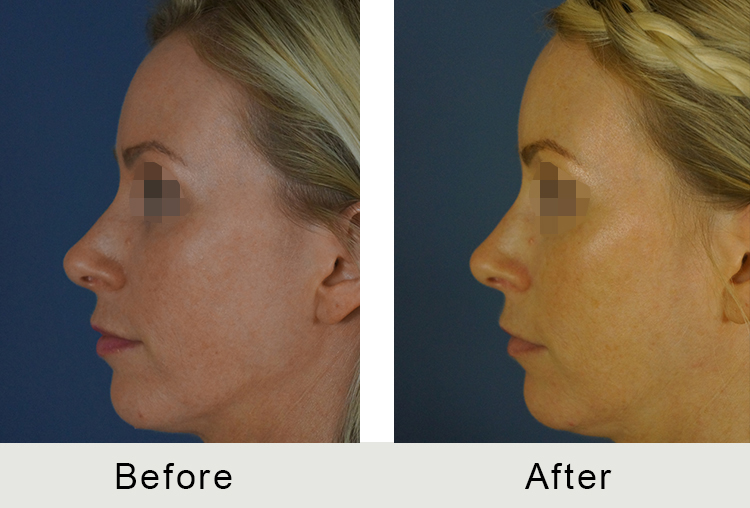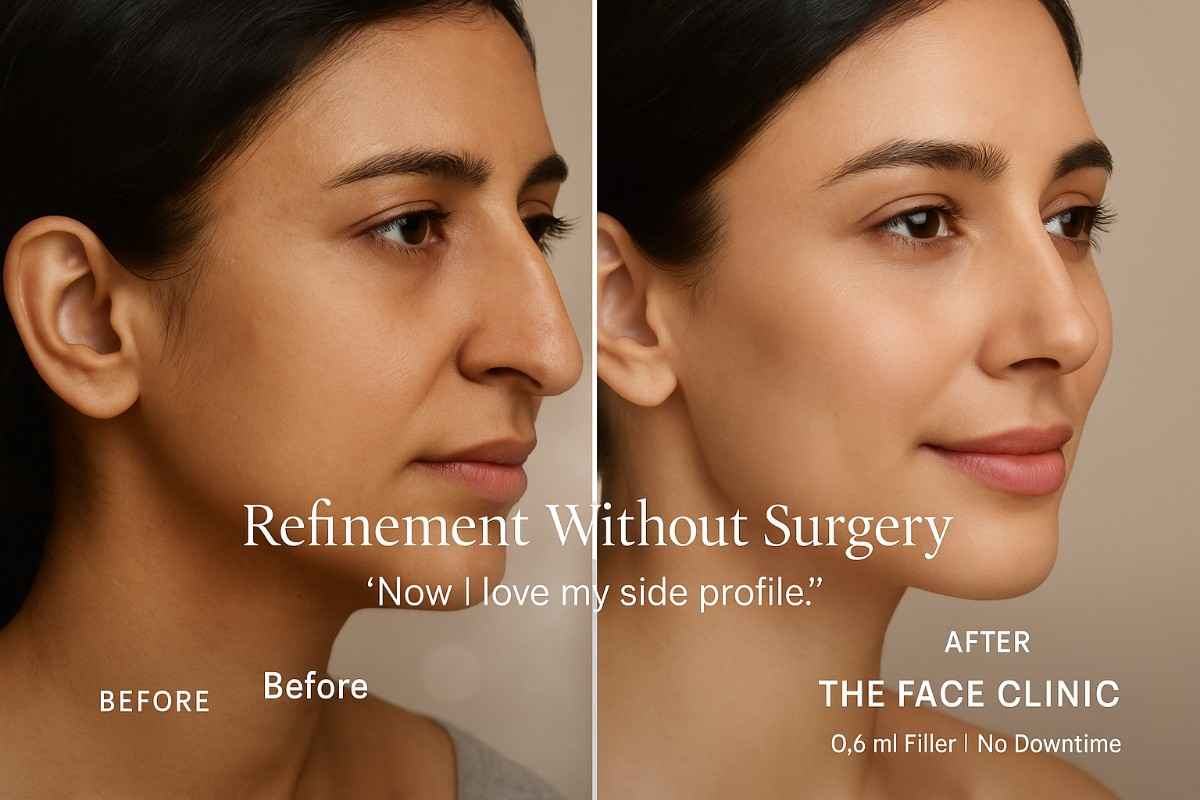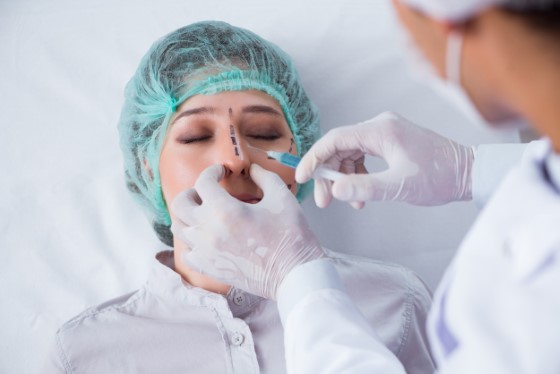
If you’ve ever thought about improving the shape of your nose but don’t want to undergo surgery, non-surgical rhinoplasty might be just what you’re looking for. Also known as a liquid nose job, this treatment offers a fast, minimally invasive way to reshape your nose using injectable fillers. With immediate results and little downtime, it’s become a popular choice for many.
But is non-surgical rhinoplasty the right option for you? Let’s explore what it is, its benefits and drawbacks, who it suits best, and how it compares to traditional surgical rhinoplasty.
What Is Non-Surgical Rhinoplasty?
Non-surgical rhinoplasty is a cosmetic procedure that uses dermal fillers, most commonly made from hyaluronic acid, to change the shape of your nose without surgery. Instead of cutting or removing tissue, this method adds volume in specific areas to create a smoother, more balanced appearance.
This treatment can:
- Smooth out small bumps or irregularities
- Raise a flat or low nasal bridge
- Improve symmetry between the two sides of your nose
- Refine and lift the tip of your nose
The whole process is usually done in a clinic and takes less than 30 minutes.

Advantages of Non-Surgical Rhinoplasty
There are many reasons why people choose this procedure over traditional surgery:
1. No Surgery or Scars
Since there are no incisions or stitches, you avoid surgical risks and scarring. This is ideal if you want subtle improvements without the commitment and recovery time of surgery.
2. Immediate Results
You will notice the difference as soon as the treatment is done. While some swelling or redness may occur, most people can go back to work or their daily routine the same day.
3. Minimal Downtime
Unlike surgical rhinoplasty, which may require weeks to heal, non-surgical rhinoplasty has little to no downtime. That’s why it’s sometimes called the “lunch break nose job.”
4. Reversible Effects
If hyaluronic acid fillers are used, the results can be reversed with an enzyme called hyaluronidase. This means if you’re unsure about permanent changes, you can always adjust or undo the effects safely.
5. More Affordable Upfront
Non-surgical rhinoplasty generally costs less than surgery. Though the results are temporary, the initial price makes it a more accessible option for many people.
Disadvantages and Limitations
It’s also important to know the limits and potential risks of this treatment:
1. Temporary Results
Fillers usually last between 6 to 18 months depending on the type and how your body breaks them down. To keep the results, you’ll need follow-up treatments over time.
2. Cannot Reduce Nose Size
This procedure works by adding volume; it cannot make your nose smaller or fix breathing problems. If you want to reduce the size of your nose or correct structural issues, surgery is necessary.
3. Not for Dramatic Changes
Non-surgical rhinoplasty is best for minor corrections like smoothing bumps or improving symmetry. It’s not suitable if you want major reshaping or functional corrections such as fixing a deviated septum.
4. Risk of Complications
Though uncommon, there are risks like blockage of blood vessels if fillers are injected incorrectly. This can lead to serious problems including skin damage or vision issues. That’s why choosing a qualified and experienced injector is essential.
5. Long-Term Cost
Because fillers need to be refreshed regularly, the cost can add up over the years. Surgical rhinoplasty, while more expensive upfront, might be more cost-effective if you want a permanent solution.
Who Is a Good Candidate for Non-Surgical Rhinoplasty?
You might be a good fit if:
- You want small cosmetic tweaks rather than major changes
- You’re not ready or don’t want surgery
- You want to try out a new look before deciding on surgery
- You have realistic expectations about what this treatment can do
Always book a consultation with a board-certified professional to discuss your goals and find out if non-surgical rhinoplasty is right for you.

How Does the Procedure Work?
During your appointment, your medical provider will assess your nose and discuss the changes you want. They’ll then carefully inject fillers into precise spots on your nose to smooth, lift, or add volume where needed.
The procedure usually takes less than 30 minutes. Numbing cream may be applied to minimize any discomfort. After treatment, you may experience mild swelling or bruising that usually fades within a few days.

What to Expect After Treatment?
- Most people can return to normal activities immediately.
- Avoid touching or pressing your nose for a few days.
- Use cold compresses if you have swelling.
- Protect your skin from strong sun exposure.
- Attend any follow-up appointments as recommended.
Non-Surgical Rhinoplasty vs. Surgical Rhinoplasty
Surgical rhinoplasty involves reshaping your nose by cutting and removing or repositioning bone and cartilage. It provides permanent, often dramatic changes but requires anesthesia, surgery, and longer recovery.
Non-surgical rhinoplasty is less invasive and offers temporary, subtle results. It can’t make your nose smaller or fix breathing issues, but it has quicker results and much less downtime.
Choosing between the two depends on your goals, budget, and willingness to undergo surgery.
Final Thoughts
Non-surgical rhinoplasty is a safe, quick, and effective way to enhance your nose without surgery. It’s great for minor corrections and offers immediate, natural-looking results with minimal recovery.
If you’re considering improving your nose’s shape but want to avoid surgery, this could be an excellent option. Just remember it’s temporary and may require maintenance treatments.
Speak with a qualified medical professional to see if non-surgical rhinoplasty fits your goals and to discuss what you can realistically expect. With the right approach, you can feel confident and happy with your appearance.
